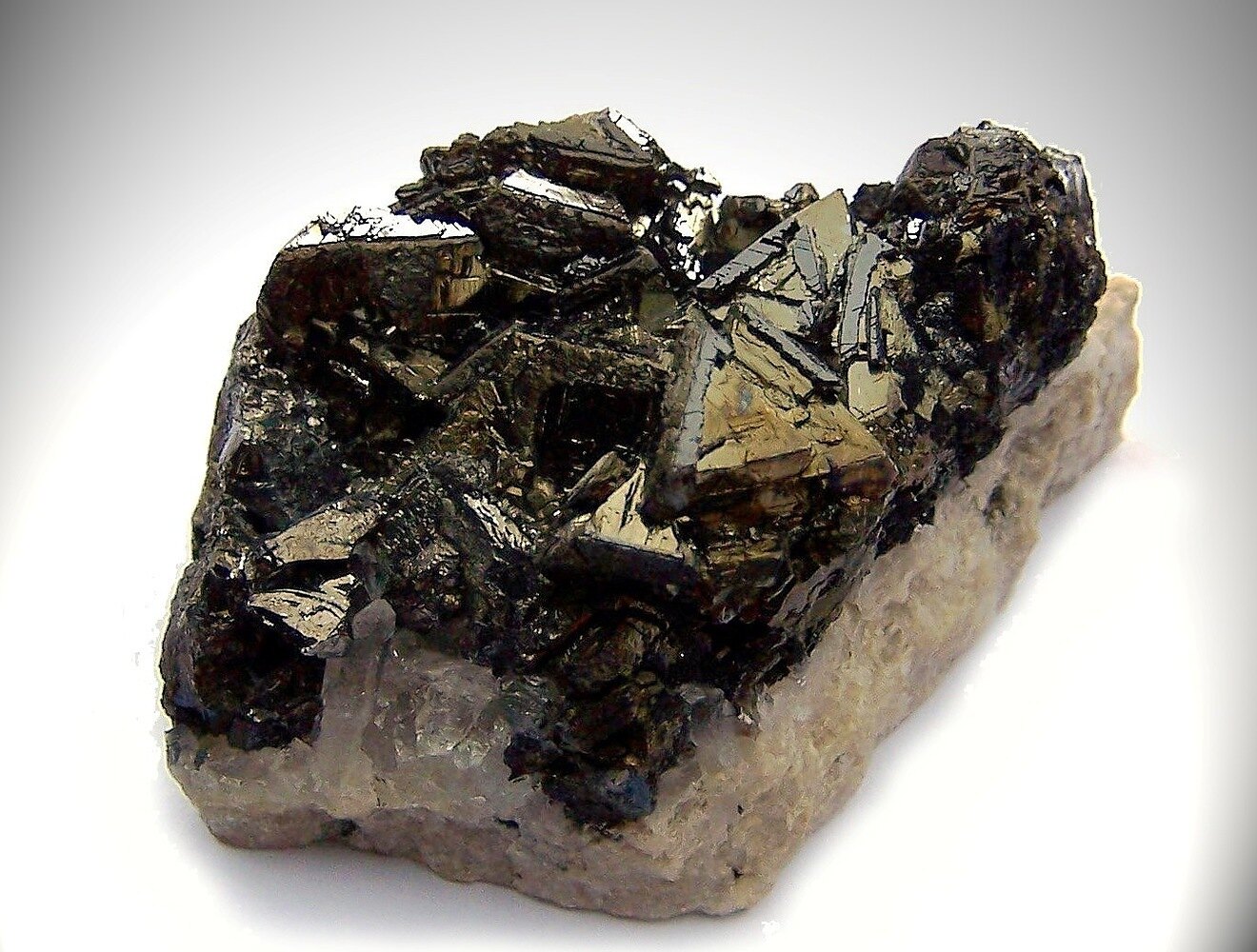
Wassonite is a rare and intriguing mineral that has captured the attention of scientists and enthusiasts alike. Discovered in a meteorite, this mineral is composed of sulfur and titanium, making it unique among known minerals. Wassonite was first identified in 2011 by NASA researchers examining a meteorite from Antarctica. Its formation likely occurred in the extreme conditions of space, providing valuable insights into the processes that shape our solar system. Despite its microscopic size, Wassonite has significant implications for understanding the history of celestial bodies. This mineral's rarity and extraterrestrial origin make it a fascinating subject for study, offering a glimpse into the mysteries of the universe.
Key Takeaways:
- Wassonite is a rare mineral found in a meteorite, named after a renowned meteorite researcher. Its tiny size and extraterrestrial origin provide valuable insights into the early solar system and space environments.
- With a high melting point and unique properties, Wassonite poses challenges for scientists due to its minuscule size and rarity. Future research may uncover more about its formation processes and potential technological applications.
What is Wassonite?
Wassonite is a rare mineral discovered in a meteorite. This mineral has intrigued scientists and space enthusiasts alike due to its unique properties and extraterrestrial origin. Let's dive into some fascinating facts about Wassonite.
Discovery of Wassonite
The discovery of Wassonite was a significant event in the field of meteoritics. Here are some key points about its discovery:
- Found in a Meteorite: Wassonite was discovered in a meteorite that landed in Antarctica.
- Year of Discovery: The mineral was identified in 2011.
- Named After John T. Wasson: It was named in honor of John T. Wasson, a renowned meteorite researcher.
- Tiny Crystals: The crystals of Wassonite are extremely small, measuring less than one-hundredth the width of a human hair.
- Electron Microscope: Scientists used an electron microscope to identify and study Wassonite due to its tiny size.
Composition and Structure
Wassonite's unique composition and structure set it apart from other minerals. Here are some details:
- Titanium Sulfide: Wassonite is composed of titanium and sulfur.
- Chemical Formula: Its chemical formula is TiS.
- Crystal Structure: It has a hexagonal crystal structure.
- High-Temperature Formation: Wassonite forms at high temperatures, indicating it originated in space.
- Single Phase: It exists in a single phase, meaning it has a uniform composition throughout.
Significance in Science
Wassonite's discovery has provided valuable insights into the study of meteorites and the early solar system. Here are some reasons why:
- Clues to Solar System Formation: It offers clues about the conditions and processes during the formation of the solar system.
- Rare Mineral: Wassonite is one of the rarest minerals found in meteorites.
- Meteorite Studies: Its presence helps scientists understand the history and composition of meteorites.
- Extraterrestrial Origin: Being extraterrestrial, it provides a direct link to materials beyond Earth.
- High-Pressure Conditions: The mineral's formation under high-pressure conditions offers insights into the environments of space.
Unique Properties
Wassonite possesses several unique properties that make it a subject of interest for researchers. Here are some notable ones:
- High Melting Point: It has a high melting point, which is typical for minerals formed in space.
- Stability: Wassonite is stable under extreme conditions.
- Reflective Surface: The mineral has a highly reflective surface.
- Non-Magnetic: It is non-magnetic, unlike many other meteorite minerals.
- Conductivity: Wassonite exhibits good electrical conductivity.
Challenges in Study
Studying Wassonite presents several challenges due to its unique characteristics. Here are some of them:
- Tiny Size: Its minuscule size makes it difficult to study using conventional methods.
- Special Equipment: Requires advanced equipment like electron microscopes for detailed analysis.
- Sample Rarity: The rarity of samples limits extensive research.
- Complex Analysis: Analyzing its properties and formation conditions is complex.
- Preservation: Preserving such tiny crystals for study is challenging.
Future Research
The discovery of Wassonite opens up new avenues for research in meteoritics and planetary science. Here are some potential areas of future research:
- Formation Processes: Understanding the processes that lead to its formation.
- Comparative Studies: Comparing Wassonite with other extraterrestrial minerals.
- Space Missions: Potentially finding more samples through space missions.
- Technological Applications: Exploring possible technological applications of its unique properties.
- Solar System History: Using Wassonite to gain deeper insights into the history of our solar system.
Final Thoughts on Wassonite
Wassonite, a rare mineral discovered in a meteorite, has fascinated scientists and space enthusiasts alike. Its unique composition of sulfur and titanium offers insights into the early solar system. Found in a meteorite that landed in Antarctica, Wassonite is incredibly tiny, with crystals only a few micrometers in size. This discovery highlights the importance of studying meteorites to understand our cosmic origins. Wassonite's rarity and distinct properties make it a subject of ongoing research, potentially unlocking more secrets about the universe. As we continue to explore space, who knows what other incredible discoveries await? Wassonite serves as a reminder of the endless mysteries that lie beyond our planet. Keep an eye on future findings, as each new piece of information brings us closer to understanding the vastness of space.
Frequently Asked Questions
Was this page helpful?
Our commitment to delivering trustworthy and engaging content is at the heart of what we do. Each fact on our site is contributed by real users like you, bringing a wealth of diverse insights and information. To ensure the highest standards of accuracy and reliability, our dedicated editors meticulously review each submission. This process guarantees that the facts we share are not only fascinating but also credible. Trust in our commitment to quality and authenticity as you explore and learn with us.
